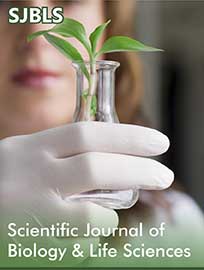 Research Article
Research Article
The Role of Polyploidy and Soil Nutrient Levels on Aphid-Predators Interaction
Peter A.Y. Ampim1*, Eric Obeng1, Ernesto Olvera Gonzalez2, Aruna Weerasooriya1, Godson O. Osuji1 and Deland J. Myers Sr.1
1College of Agriculture and Human Sciences, Prairie View A&M University, USA
2Technological Institute of Pavilion of Arteaga, Aguascalientes, Mexico
Peter A.Y. Ampim, College of Agriculture and Human Sciences, Prairie View A&M University, Texas, USA.
Received Date: September 02, 2020; Published Date: October 30, 2020
Abstract
Understanding the consequences of intra specific genetic variation within same plant communities represents a critical research direction to explore. Polyploidy plants create intra specific interactions within same species which leads to complex associations within communities of organism. We investigated the effect of polyploidy (cytotypes) and soil nutrient levels on U. nigrotuberculatum–predator interaction. We used S. altissimato investigate the interactions between U. nigrotuberculatum, ant and Hippodamia parenthesis. Plants were grown individually in 4L pots in a Metro Mix 360 soil medium combined with 50% sand. There were 32 plants in the garden; 16 diploid and 16-hexaploid plants. Eight of the plants from each cytotype received a N.P.K (18-6-12) nutrient addition (Osmocote 4g) and eight received no nutrients (control). We found that plant size play an important role in aphid choice. Plant size (biomass) is greatly influence by soil nutrient levels. Ants are in a mutual association with U. nigrotuberculatum. The presence of large population of ants prevented or reduced the activities of lady beetles.
Keywords: Predator; Aphid; Polyploidy; Plant Biomass; Soil nutrients
-
Beck Arebamen Akhiwu, Isaac Gadzekpo. The Role of Polyploidy and Soil Nutrient Levels on Aphid-Predators Interaction. Sci J Biol & Life Sci. 1(3): 2020. SJBLS.MS.ID.000515.





